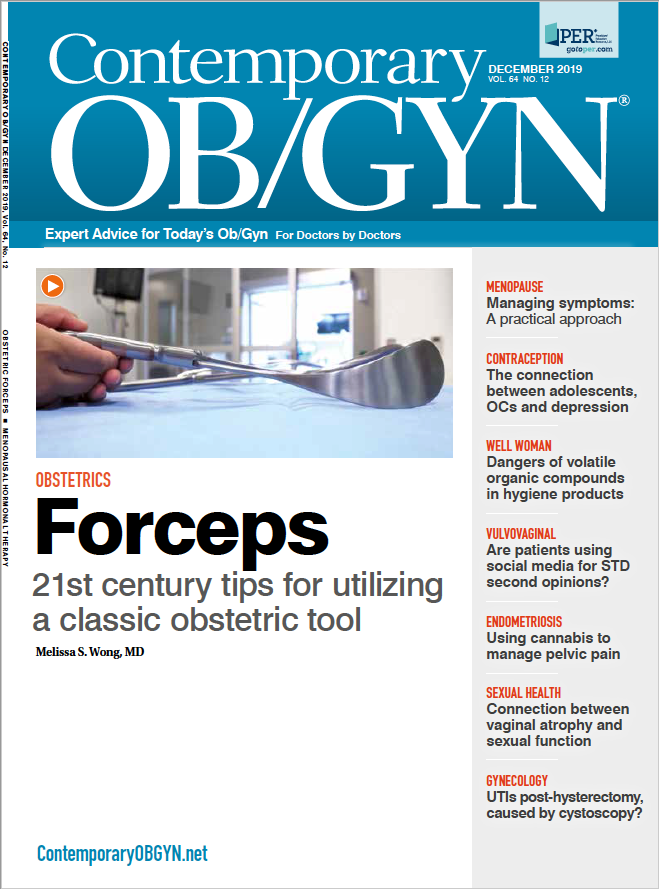Perimenopause’s negative impact on sexual function
According to research published in Menopause, vaginal atrophy-a treatable condition-appears to be the most impactful factor for perimenopausal women and declining sexual function.
©ladyalex - stock.adobe.com

A new study by Italian investigators points to a link between perimenopause and sharp decline in sexual function. The results, published in Menopause, show that vaginal atrophy-a treatable condition-is the factor that has the most impact on the negative trend.
The cross-sectional study enrolled 518 women aged 40 to 55 years at 30 centers across Italy. The authors analyzed relationships between vaginal atrophy and symptoms associated with it and the Female Sexual Function Index (FSFI) score, which is composed of 19 questions around the domains of desire, arousal, orgasm dyspareunia, lubrication, and sexual satisfaction.
Vaginal atrophy was defined as presence of a pH > 5, subjective vaginal dryness, and an objective sign, as assessed by a medical doctor. Mucosal pallor and dryness, thinning of vaginal rugae, mucosal fragility, and presence of petechiae were the signs considered.
Overall, 70.6% of participants had sexual dysfunction, as defined by a FSFI score < 26.55. It was seen in 55% of those aged 40 to 45, compared with 82.8% of those aged 52 to 55 (P < 0.01). From 48 to 51 versus 46 to 48 years, mean FSFI score and sexual dysfunction increased: 23.13 ± 9.76 vs. 19.49 ± 9.88; P < 0.05). A similar trend was seen from ages 48 to 51 vs. 52 to 55: 21.3 ± 8.06 to 17.59 ± 9.11; P < 0.01).
Age, weight, ex-smoking status, sedentary lifestyle, menopausal status, subjective vaginal dryness, dyspareunia, and vaginal atrophy were all inversely related to a woman’s FSFI score. Age, vaginal atrophy, and presence of vaginal dryness were all independent determinants of FSFI (R2 02.08; P = 0.011). The score was independently correlated (R2 0.116) with weight (CR -0.067; 95% confidence interval [CI] -0.126, -0.006; P < 0.032), menopausal status (CR -2.406; 95% CI -4.180, -0.63; P < 0.008), and vaginal dryness (CR -5.647; 95% CI -7.677, -3.618; P < 0.0001).
The only variable that correlated independently with each FSFI domain-including desire, arousal, lubrication, orgasm, satisfaction, and dyspareunia-was vaginal atrophy. The authors concluded that it is the symptom most closely related to all domains of female sexuality. They believe that prospective studies are needed to determine whether selective treatment of vaginal dryness improves female sexual function in perimenopausal women.
Said North American Menopause Society Medical Director Dr. Stephanie Faubion in a press release, “Given the high prevalence of sexual dysfunction in women, identifying an eminently treatable contributing factor such as vaginal dryness may allow women to maintain their sexual function during the menopause transition.”

FDA approves Visby’s test for at-home STI identification
Published: March 28th 2025 | Updated: March 28th 2025The FDA has approved Visby Medical’s at-home sexually transmitted infection test, allowing women to screen for chlamydia, gonorrhea, and trichomoniasis without a prescription.
Read More
In this episode of Pap Talk, Gloria Bachmann, MD, MSc, breaks down what it means to be a health care provider for incarcerated individuals, and explores the specific challenges women and their providers face during and after incarceration. Joined by sexual health expert Michael Krychman, MD, Bachmann also discusses trauma-informed care and how providers can get informed.
Listen
